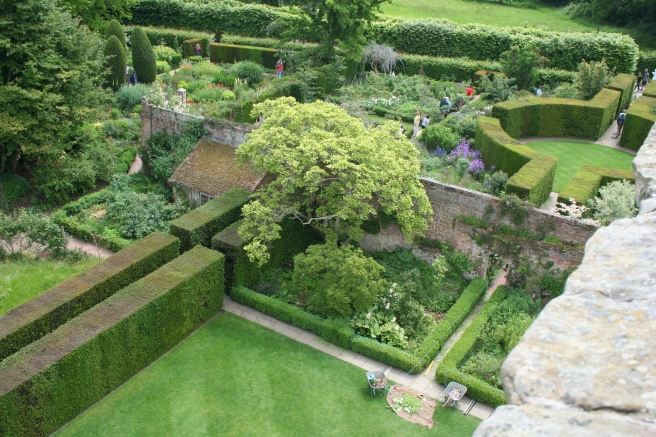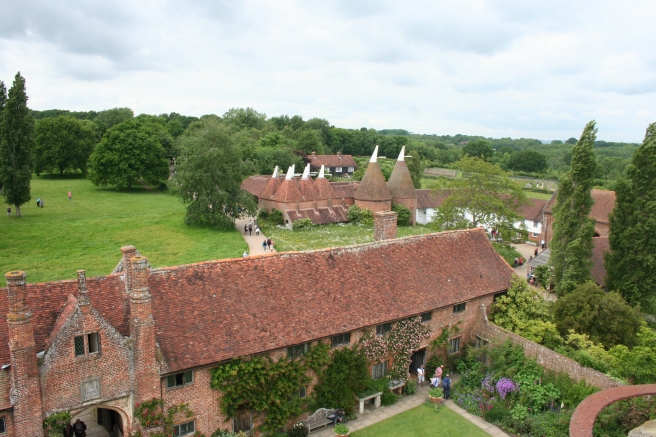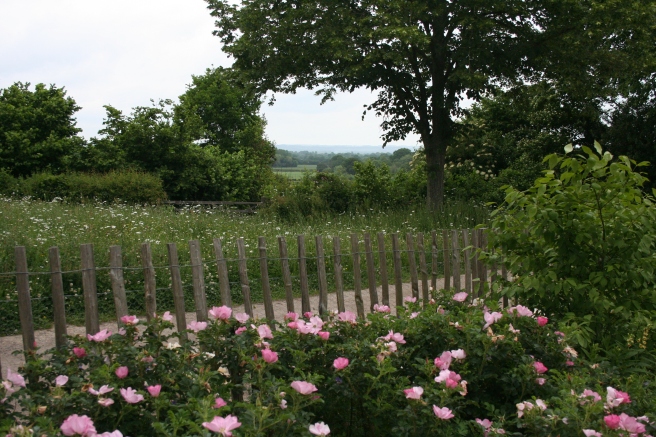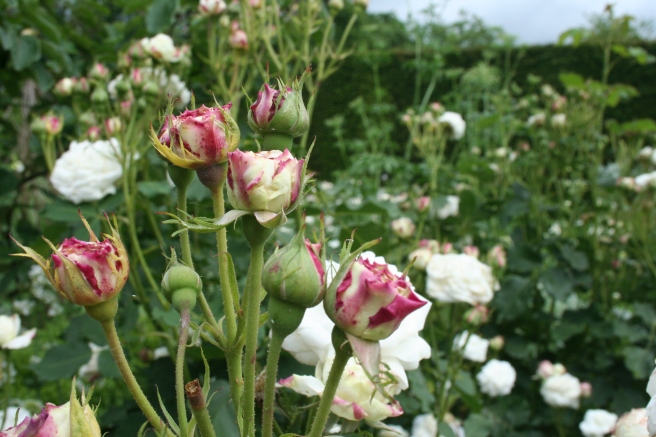Each week, Cathy at Rambling in the Garden hosts In a Vase on Monday and encourages fellow bloggers to find something in their gardens to photograph and write about. It’s such a lovely thing to do on a Monday morning that I try to take part every week. Some weeks, it’s just not possible due to lack of time but whenever I can squeeze it in, it’s a prompt to get out into the garden and find something, anything, to stick in a vase. December can be tricky but June is not. June is when there is abundance in my garden and when I’m in the happy situation of being spoilt for choice.
I’ve grown increasingly fond of roses in recent years. I used to think they were fussy and over-the-top and too much like hard work to keep happy but I’ve come round to them. I mean, what’s not to love about layers of silken petals in delicate shades of pink, say, that smell delicious?! Our latest addition to the rose tribe in our garden is ‘The Generous Gardener’ and I snipped two blooms off it this morning (the two palest pink ones). They were heading in the wrong direction so can be spared for the vase. The other two roses are unknown varieties – they were overgrown in the garden when we moved here. The brighter pink one, in bud in the centre of the first photo, is from a rose growing at the base of a pillar in the windiest spot in the garden. We cut it right back to its base last year to paint the pillar but it’s come back brilliantly. The two darker pink roses are from an old climber at the base of the back garden wall that was also cut back to renovate it – the flowers smell amazing.
Joining the roses are Geum ‘Blazing Sunset’, a couple of pink scented pelargonium flowers, Salvia ‘Hot Lips’ (from a plant that was moved, trimmed and has come back mostly red, which I prefer), Linaria, one Heuchera flower stem and a couple of leaves, copper beech leaves, a stem of mint, a lovely snapdragon, and really tall Briza (which has seeded everywhere, thank you Cathy!).
You can see from the photos that the light is pretty low today. It’s been overcast and dull all day after a sunny summery day yesterday but that’s perhaps fitting as it’s back to school for everyone here and all the teenagers had exams. History GCSE for the younger son, Psychology A-level for the elder and Science, Spanish and RE end-of-year exams for my daughter. It’ll all be over quickly for her this week, and all over for the other two by 19th June, thank goodness. They’re all home now, tired, hungry and a little shell-shocked so I’m off to make a cake. I know we’re all meant to be reducing our sugar intake these days but sometimes a large slice of cake is just what you need.
Whether you’re taking exams, baking for exam-takers, working hard or holidaying, I hope you have a thoroughly good week.























